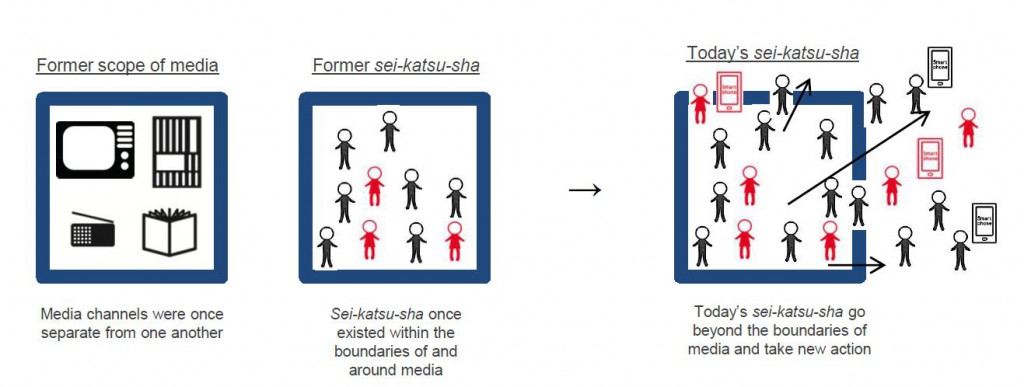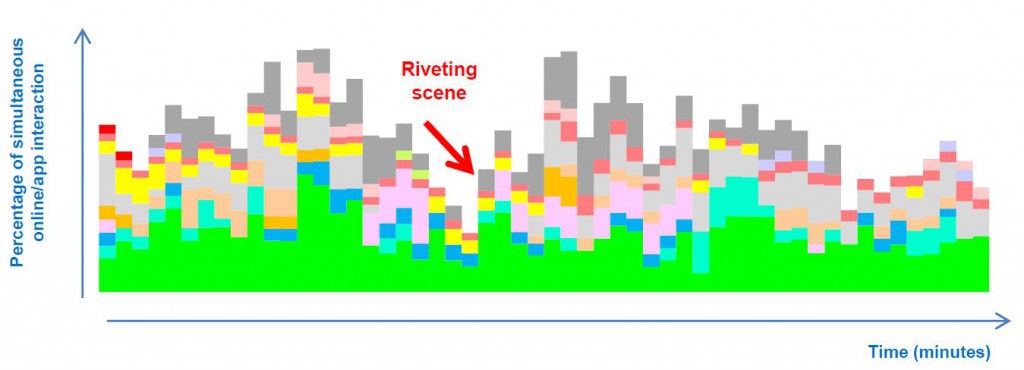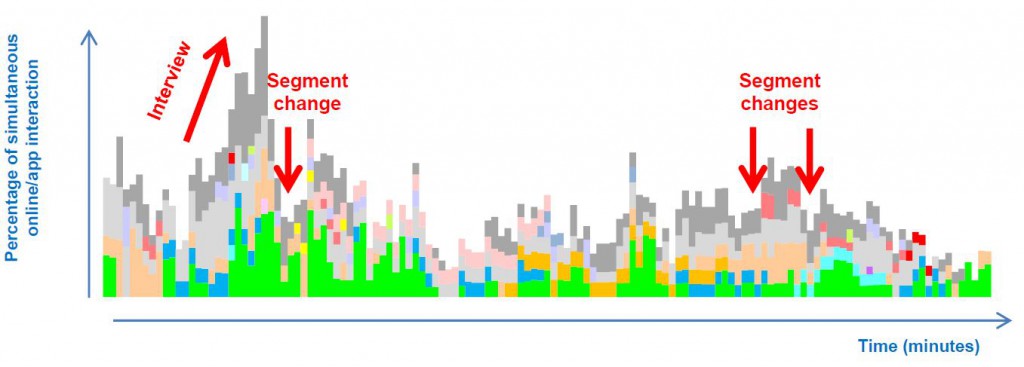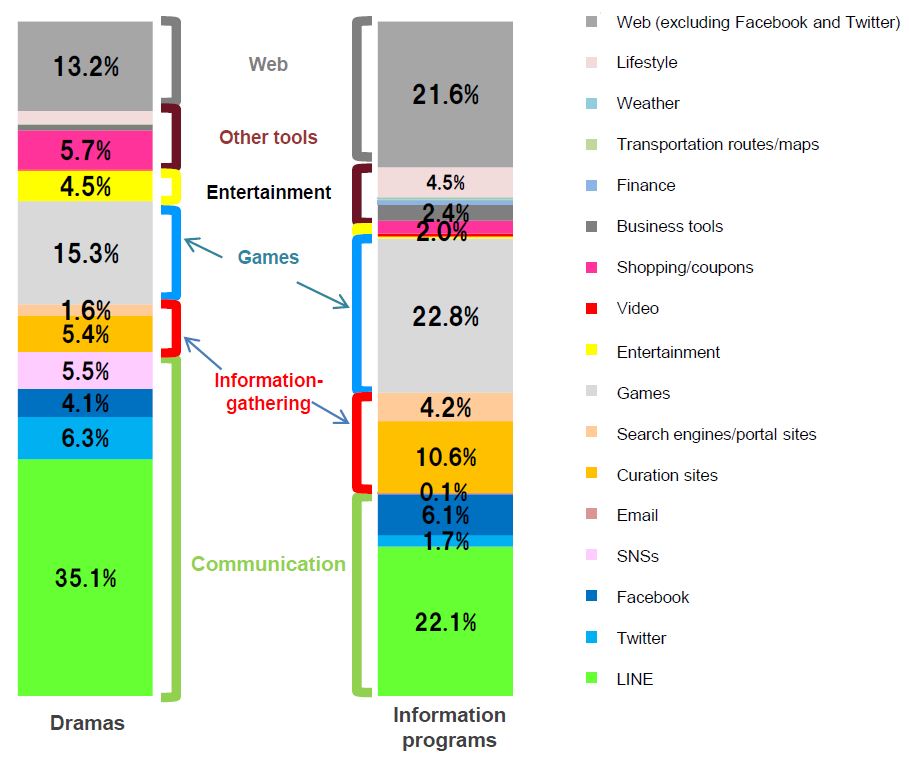![]()
![]()
12 December, 2014
- Source:
- Hakuhodo DY Media Partners
Media Extension: Expanding lives, Expanding Media
Introducing a new theme in sei-katsu-sha–media interactions
The Hakuhodo DY Media Partners Institute of Media Environment has announced Media Extension: Expanding lives, Expanding Media, a new theme in sei-katsu-sha–media interactions. The introduction was made at the Eleventh Institute of Media Environment Forum, held November 18, 2014 in Tokyo. The HDYMP Institute of Media Environment is headquartered in Minato-ku, Tokyo, and headed by Masaki Mikami.
Note: This release covers a portion of the content announced at the Institute of Media Environment Forum.
Media Extension: Background
The rapid spread of smartphones is poised to top 60% in 2014 (the 2014 Fixed-point Media Survey conducted by the Institute of Media Environment showed smartphone usage at 59.1% in February 2014). The number of screens in our lives increases as smart devices become commonplace, and we already seeing signs that the ways sei-katsu-sha interact with media are undergoing a transformation. In the past, sei-katsu-sha engaged media primarily through reading, watching, and listening. Now that they have smart devices, however, their interactions are no longer limited to those three activities. As they come in contact with media, sei-katsu-sha are at the same time looking things up, making purchases, exchanging information, and so much more. The range of behaviors associated with media contact is expected to expand in many different directions and at a speed never seen before.
From a qualitative standpoint, these trends present us with still-uncharted territory. “What TV information do sei-katsu-sha respond to by using their smartphones?” “For what ends do sei-katsu-sha operate their smartphones?” “What functions or applications are they using, and how frequently?” These are just some of the questions we have yet to answer.
The Institute of Media Environment has responded by setting up the hypothesis that the complex interactions between TV and smartphones expands sei-katsu-sha behavior. This hypothesis was then investigated from three angles: (1) a log analysis study of simultaneous smartphone/TV actions, (2) an attitudes survey on information behaviors, and (3) an eye-tracking study.
Range of sei-katsu-sha behavior continues to expand outside of media
Generally speaking, media formerly existed as a closed system with closed content. In other words, clear boundaries separated what was “inside” and “outside” media channels: viewers simply watched and readers simply read. With the popularization of smartphones, however, sei-katsu-sha behaviors are now rapidly expanding outside of media channels themselves; no longer simply “watching” or “reading”, they now look things up, chat on social media, and so on. The range of actions that sei-katsu-sha take is growing as technology progresses. When seen from a media perspective, we can say that the media battlefield is becoming increasingly vast.
Expanded behaviors as seen in a log analysis of simultaneous smartphone/TV actions
We’ll start by looking at the log analysis of simultaneous smartphone/TV actions, one of the three studies recently done by the Institute of Media Environment. This study looked at simultaneous online/app interaction among those watching information programs and dramas.
Changes of the percentage of simultaneous online/app interaction among those watching information programs and dramas.
Changes of the percentage of simultaneous online/app interaction
Dramas: Program-linked social media communications are expanding
People begin interacting with the internet and applications as soon as the program starts. The light green portion of the graph represents interaction with the LINE app, and shows the conditions that trigger communication while watching the program. There is a point where the percentage of simultaneous online/app interaction drops suddenly; this turned out to be a riveting scene in the drama. Each bar in the graph shows a single minute, and the fact that the height and colors on the graph continually change indicates that viewer behaviors vary moment by moment.
Information programs: Online and app behaviors are not taking away from TV viewing, but rather expanding the variety of media behaviors that occur while watching programs
Information programs have several different segments, and the study showed that climactic moments and moments of transition between segments correspond to a decrease in simultaneous behaviors (the percentage of simultaneous online/app interactions decreases). It appears that simultaneous behaviors increase when viewers can understand the content just by listening and without following the program images on the screen—for example, during interviews or other times when the on-screen characters are fixed.
It would appear that online/app behaviors are not taking away from TV viewing, but rather expanding the variety of media behaviors that occur while watching programs.
Breakdown of simultaneous online/app interactions
Overall trend: Drama programs trigger communication behaviors while information programs trigger information-gathering and gaming
In looking at the online/app interactions of people watching information programs, it was found that there were fewer outgoing communications than with dramas, but more information-gathering activities. In other words, the amount of information activity increased. Viewers were inspired by the different information presented by the program, and were observed collecting information that would lead to action. Simultaneous online/app interactions among drama viewers were mostly messaging on platforms such as LINE, Facebook, Twitter, and other social media sites—essentially communications activity. Though they are not shown here, a large number of actions (more than 20 different kinds) were taken just through apps during the hour. These results confirm expanding communications activity during dramas and expanding information activity during information programs, suggesting that sei-katsu-sha engage in different types of behaviors depending on the genre of the program.
Log study characteristics
Unlike surveys, the log analysis method does not rely on participant memory. Measurements and data are instead collected by tracking sei-katsu-sha activities. Notably, the study does not take place on a specific day; rather, measurements are constantly being taken. This makes it possible to observe actual sei-katsu-sha behavior.
Study overview
To observe simultaneous TV-mobile interactions, log data was analyzed from a single-source panel from Intage Inc. (i-SSP of those interacting with target programs) to monitor both TV and mobile use.
In announcing its Media Extension: Expanding lives, Expanding Media theme, the Institute of Media Environment conducted (an attitudes survey on information behavior and an eye-tracking study along with its log analysis study of simultaneous smartphone/TV actions. The Institute has also prepared overseas case studies and a Media Roadmap 2020 to discuss issues related to the future of media and society.
To find out more, please visit the Institute of Media Environment website.
Adobe Reader is required to read these PDF files. It can be obtained free of charge from Adobe Systems Incorporated.




